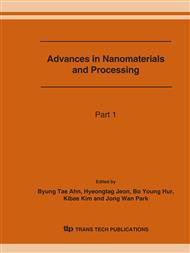p.1517
p.1521
p.1525
p.1529
p.1533
p.1537
p.1541
p.1545
p.1549
Effect of Delta Ferrite on Corrosion Resistance of Type 316L Stainless Steel in Acidic Chloride Solution by Micro-Droplet Cell
Abstract:
More than 2% δ-ferrite phase is presented in type 316L stainless steels due to improvement of hot workability or welding process. In order to clarify the mechanism on how the δ-ferrite affects the corrosion resistance, electrochemical tests in a micro-droplet cell were conducted and microstructures were analyzed by TEM-EDS and SEM-EDS. Especially, the micro-droplet cell was modified at our laboratory to observe the polarization behavior of δ-ferrite phase in an acidic chloride solution. The anodic polarization behavior in both active zone and passive zone was affected by δ-ferrite. The degradation of corrosion resistance in the low potential zone with δ-ferrite phase is due to the preferential dissolution of a matrix, γ phase. It is explained with the fact that the formation of δ-ferrite lowers the concentrations of chromium and molybdenum in γ phase. It is also confirmed by potentiostatic test, EDS analyses and phase-equilibrium prediction. In addition, the micro-droplet cell and EDS analysis reveled that the pitting potential in the neutral pH solution was affected by Ca containing inclusion rather than δ-ferrite phase.
Info:
Periodical:
Pages:
1533-1536
Citation:
Online since:
June 2007
Authors:
Price:
Сopyright:
© 2007 Trans Tech Publications Ltd. All Rights Reserved
Share:
Citation:


